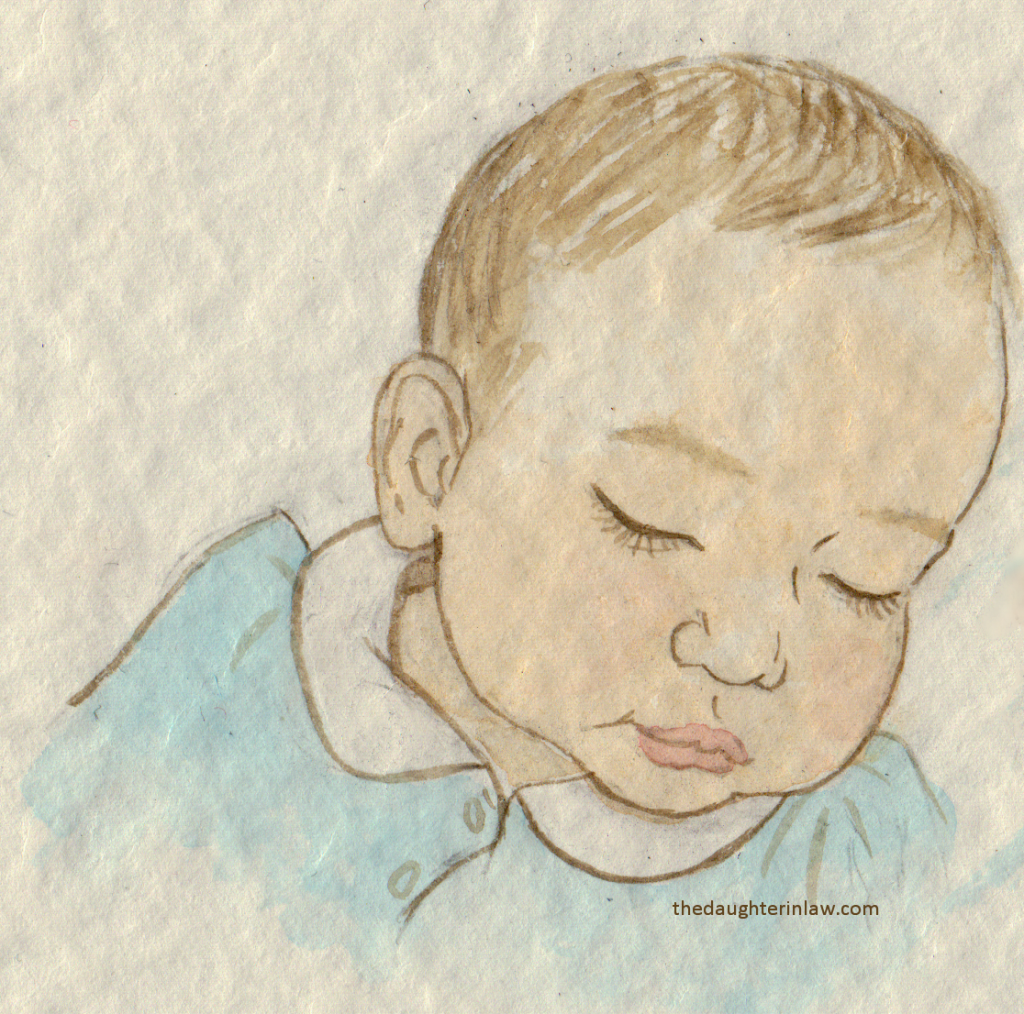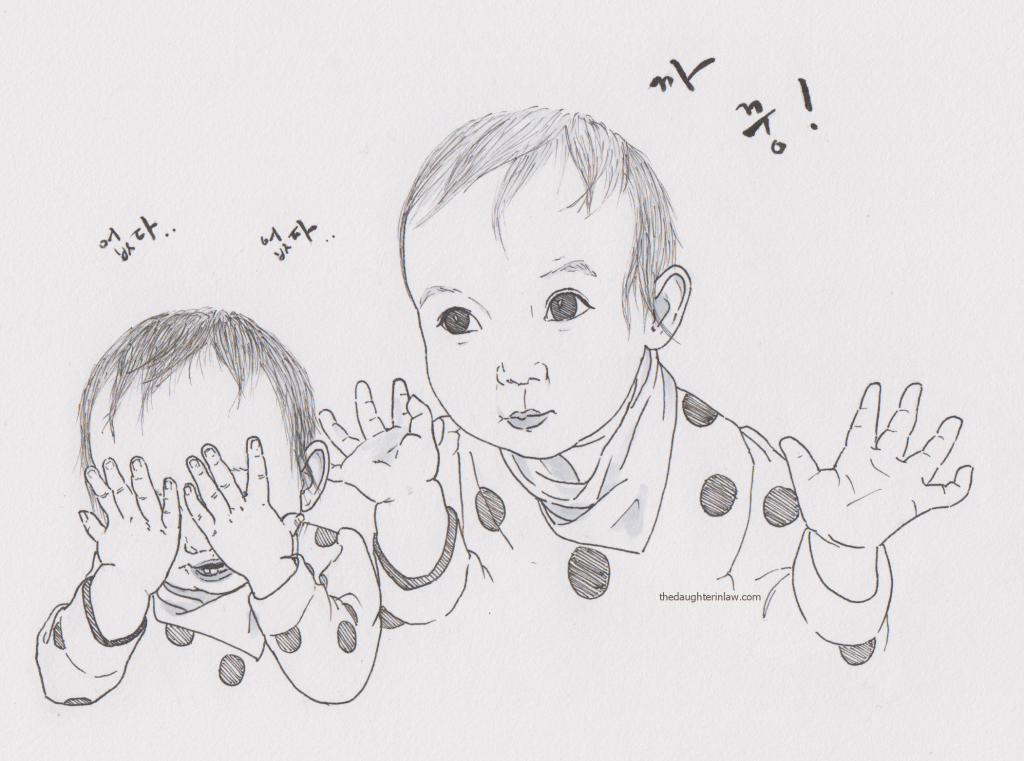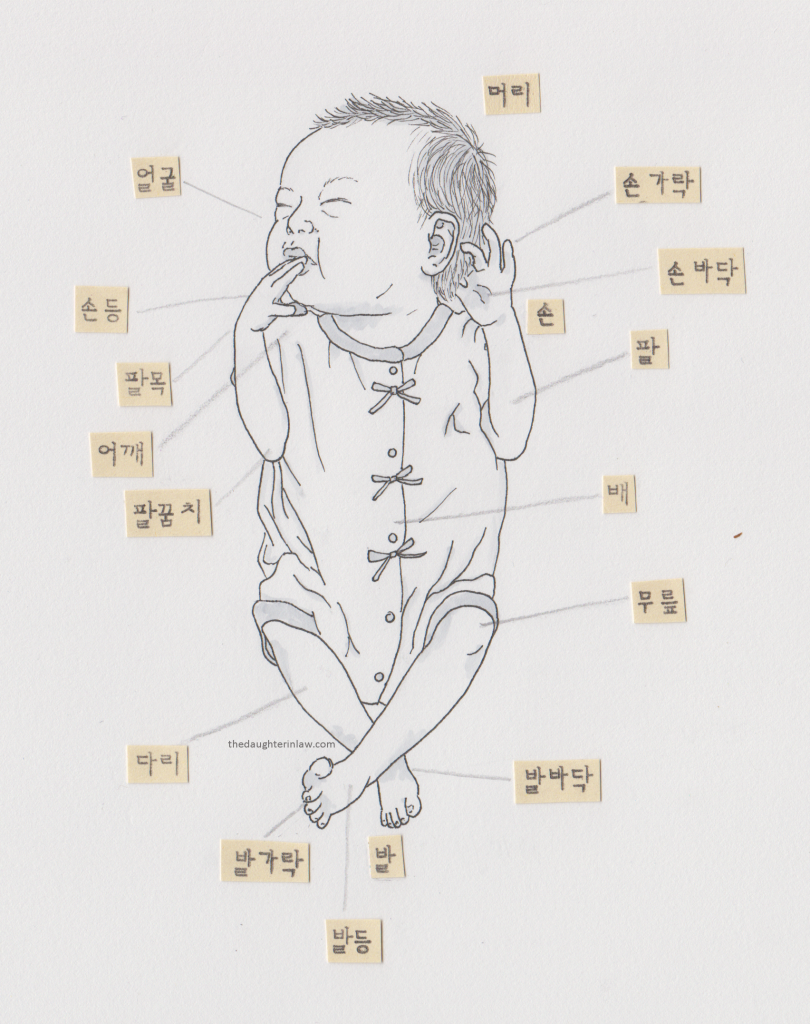
If you ride the Seoul subway with a baby, chances are you might find yourself sitting in the priority seats where elderly ladies and gentlemen will frequently show interest in, and ask about your baby. This is a really great opportunity to practise speaking Korean, but you might encounter some baby related questions that are unfamiliar. Before travelling to Korea when Alice was 5 months old, I asked my husband to help me prepare some questions and answers to help me with this kind of situation.
NOTE: Elderly people are much more likely to speak in dialect. You’ll find there are often many ways to ask the same thing, so I’ll list some examples here but the list is obviously not comprehensive!
First of all, you can say 여기 앉으세요 if you want to offer your seat to someone .
You might hear 앉아, when an older person would like to offer you a seat.
If you don’t hear a question clearly, you can ask 네? (in a kind of higher pitch that rises slightly) to hear it again.
If you really don’t understand, hopefully you can remember this sentence- 무슨 말씀이신지 잘 모르겠어요 (I don’t really understand what you are saying)
There are lots of words for baby. eg.아가 /애기/아기
Basic Questions
몇 개월이에요?/몇 살이에요? How many months?/How many years old?
몇 킬로? How many kilos (kg)?
건강해? (is the baby) healthy?
잘 자라? (is the baby) growing well?
Sleep
밤에 잘 자? (does the baby) sleep well at night?
밤에 자주 깨? (does the baby) wake up a lot at night?
밤에 자주 일어나? (another way of asking if the baby wakes up a lot)
Feeding
젖 잘 먹어? (does the baby) breastfeed well?
모유 잘 나와? Does your milk flow well? (I know it seems like an odd question.. you might be surprised what some people ask, but it’s usually intended kindly!!)
모유 수유해? Do you breastfeed (the baby)?
모유 먹여? (another way of asking if you are breastfeeding the baby)
(Related vocabulary- 모유 breast milk, 분유 formula milk. Seeing I didn’t feed formula milk, I’m afraid I didn’t think up much about this. Also, baby bottle is 우유병)
Crying
자주 울어? (does the baby) cry alot?
잘 울어? (does the baby) cry well? (I guess this implies that the baby is in good health if it can cry well, so if the baby is healthy, answer 네, 잘 울어요)
왜 울어? Why (is the baby) crying?
Skills
애기 기니? Is the baby crawling (yet)?
기어? (does the baby) crawl?
길 수 있어? Can (the baby) crawl?
기기 시작했어? (has the baby) started crawling?
(Related vocabulary- 뒤집다 roll over , 기다/기어 다니다 crawl/crawl about, 배 밀이하다commando crawl, 혼자 앉다 sit by herself, 혼자 서다 stand by herself, 걷다 walk)
Etc.
머리 밀었어? Did you shave (the baby’s) head?
삭발 했어? Did you shave (the baby’s) head?
(*Culture point- Koreans, like many Asian cultures, usually shave a baby’s head in the belief their hair will grow back thicker and more beautiful. We didn’t do this to Alice.)
Other expressions you might hear
아이구! 이뻐라! Oh how pretty!
엄마 닮았네~! (She) looks like (her) mum!
졸린가봐 (the baby) looks tired
잠이 왔나봐 (the baby) looks like (she’s) falling asleep
얼굴에 잠이 왔네 (the baby’s) face looks sleepy
배 고픈가보다 (the baby) looks hungry
애기 춥겠다! (the baby) looks cold
(*Tip: put socks on your baby or you will get asked this excessively!!!!)
애기 안아 줄까? Shall I hold the baby? (lit. give a cuddle)
BUT WAIT! How old IS my baby?
Since Koreans calculate age a little differently than we do in the west, you might be wondering how to tell someone the correct age of your baby. Fear not! For babies under two years old, you can describe the baby’s age in months.. that should give you a little time to figure out if she’ll be turning two or three at 24 months!
 This is a pretty and quite simple lullaby that my mother in law sings to Alice when we are staying in Korea.
This is a pretty and quite simple lullaby that my mother in law sings to Alice when we are staying in Korea.








